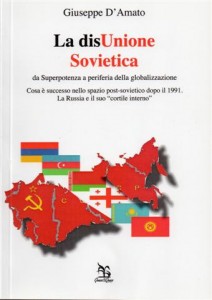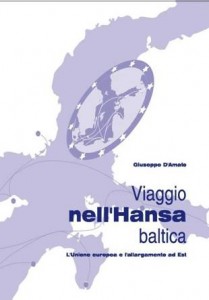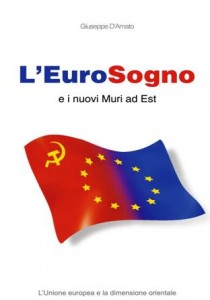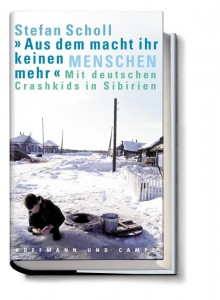OSCE, in Slavyansk not monitors, but Military verification team sent from OSCE countries.
26 Apr 20141/4 Comms with military observers in Donetsk region lost.Team not OSCE monitors but sent by States under Vienna Doc on military transparency
7:35 PM – 25 Apr 2014
2/4 All members of the OSCE Special Monitoring Mission and OSCE/ODIHR election observers are safe and accounted for
7:36 PM – 25 Apr 2014
3/4 Military verification team – led by Germans – and composed of 8 members – 4 Germans, 1 Czech, 1 Danish, 1 Polish, 1 Swedish
7:36 PM – 25 Apr 2014
4/4 Military verification team sent following invitation from Ukraine under terms of Vienna Document 2011
7:37 PM – 25 Apr 2014
Source: OSCE.org
—
The Vienna Document is an agreement between the participating states of the Organization for Security and Co-operation in Europe implementing confidence and security building measures. 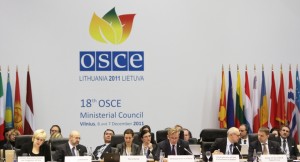
Its provisions include an annual exchange of military information about forces located in Europe (defined as the Atlantic to the Urals), notifications for risk reduction including consultation about unusual military activities and hazardous incidents, prior notification of certain military activities, observation of certain military activities, exchange of annual calendars, and compliance and verification by inspection and evaluation visits.
This exchange differs from the Global Exchange of Military Information in that it is limited to forces in Europe, while the Global Exchange of Military Information applies to all forces of the participating states, wherever located.
The annual exchange of information is conducted concurrently with the annual exchange of information under the Conventional Forces in Europe treaty, in Vienna, Austria in December of each year. The Vienna Document has been revised periodically, and the current version is the 2011 version.
From Wikipedia
—
Overview of Vienna Document 2011
Vienna Document 2011 (VD11) is composed of politically binding confidence and security-building measures (CSBMs) designed to increase openness and transparency concerning military activities conducted inside the OSCE’s zone of application (ZOA), which includes the territory, surrounding sea areas, and air space of all European (Russia from the western border to the Ural Mountains) and Central Asian participating States. A variety of information exchanges, on-site inspections, evaluation visits, observation visits, and other military-to-military contacts take place according to VD11 provisions. In the case of the United States (and Canada), only military forces and activities inside the ZOA are impacted.
VD11 builds on previous agreements: the 1975 Helsinki Final Act, the Document of the Stockholm Conference of 1986, the 1992 Helsinki Document, and the Vienna Documents of 1990, 1992, 1994, and 1999. It is part of an interlocking web of mutually enforcing agreements, including the Treaties on Conventional Arms Control in Europe (CFE) and Open Skies, which form the current European conventional arms control framework.
Comment Form
Welcome
We are a group of long experienced European journalists and intellectuals interested in international politics and culture. We would like to exchange our opinion on new Europe and Russia.
Categories
- Breaking News (11)
- CIS (129)
- Climate (2)
- Energy&Economy (115)
- EU Eastern Dimension (85)
- Euro 2012 – Sochi 2014 – World Cup 2018, Sport (43)
- Euro-Integration (135)
- History Culture (198)
- International Policy (261)
- Military (74)
- Interviews (18)
- Italy – Italia – Suisse (47)
- Odd Enough (10)
- Poland and Baltic States (126)
- Religion (31)
- Russia (421)
- Survey (4)
- Turning points (4)
- Ukraine (176)
- Российские страницы (113)
Archives
- November 2020
- October 2020
- September 2020
- August 2020
- July 2020
- May 2020
- April 2020
- March 2020
- January 2020
- December 2019
- November 2019
- October 2019
- September 2019
- August 2019
- July 2019
- June 2019
- May 2019
- April 2019
- March 2019
- February 2019
- December 2018
- November 2018
- October 2018
- September 2018
- August 2018
- July 2018
- June 2018
- May 2018
- April 2018
- March 2018
- February 2018
- January 2018
- December 2017
- November 2017
- October 2017
- September 2017
- August 2017
- July 2017
- May 2017
- March 2017
- January 2017
- December 2016
- November 2016
- October 2016
- September 2016
- July 2016
- June 2016
- May 2016
- April 2016
- February 2016
- January 2016
- November 2015
- October 2015
- September 2015
- June 2015
- April 2015
- March 2015
- February 2015
- January 2015
- December 2014
- November 2014
- October 2014
- September 2014
- August 2014
- July 2014
- June 2014
- May 2014
- April 2014
- March 2014
- February 2014
- January 2014
- December 2013
- November 2013
- October 2013
- September 2013
- August 2013
- July 2013
- June 2013
- May 2013
- April 2013
- March 2013
- February 2013
- January 2013
- December 2012
- November 2012
- October 2012
- September 2012
- August 2012
- July 2012
- June 2012
- May 2012
- April 2012
- March 2012
- February 2012
- January 2012
- December 2011
- November 2011
- October 2011
- September 2011
- August 2011
- July 2011
- June 2011
- May 2011
- April 2011
- March 2011
- February 2011
- January 2011
- December 2010
- November 2010
- October 2010
- September 2010
- August 2010
- July 2010
- June 2010
- May 2010
- April 2010
- March 2010
- February 2010
- January 2010
- December 2009
- November 2009
- October 2009
- September 2009
- August 2009
Our books
